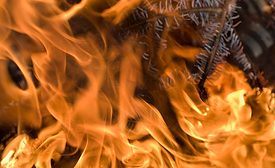ARTICLES
Fire-Retardant Adhesives
This article examines the external events that have led to greater awareness of adhesives’ performance in the event of a fire, the standards and regulations that are being imposed, and the development of new fire-resistant materials.
November 1, 2007
Biodegradable Polymers in Adhesive Systems
Many biodegradable polymers are suited for adhesive applications, such as environmentally friendly packaging, recyclable envelope adhesives and biomedical devices.
June 1, 2007
Safety First: Safe Handling of Adhesives and Sealants
While cured adhesives and sealants are generally considered safe, care must be taken with airborne particles, decomposition products, and uncured components.
March 1, 2007
How Sealants Function
How do the application and performance characteristics of sealants correlate to the composition of the sealant formulation?
February 27, 2006
Keep the info flowing with our eNewsletters!
Get the latest industry updates tailored your way.
JOIN TODAY!Copyright ©2025. All Rights Reserved BNP Media.
Design, CMS, Hosting & Web Development :: ePublishing



